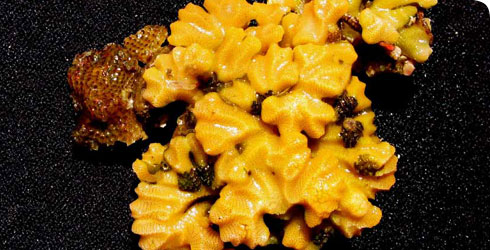Tennysonia stellata (Tennyson’s star bryozoan)
Tennysonia stellata Tennyson’s star bryozoan is a found in the sea off South Africa.
Bryozoans, commonly known as moss animals originated at least 480 million years ago.
Today there are about 5000 living species of bryozoans many live in the sea, but some species prefer freshwater settings.
In some parts of the world, like the Otago Shelf in New Zealand, Antarctica and South Africa, bryozoans are important for bioconstruction on the sea-bed. Tennysonia stellata, a cyclostome bryozoan endemic to South African waters is one such species.
Like all marine animals that secrete calcium carbonate skeletons, the fate of Tennysonia stellata is uncertain. Acidification of the oceans caused by man-made carbon dioxide emissions into the atmosphere may be a threat.
Species detail
Naming of Tennysonia stellata

Alfred, Lord Tennyson FRS
The genus Tennysonia was named after the English poet Alfred, Lord Tennyson FRS (6 August 1809–6 October 1892). The species name stellata refers to the overall star-like arrangement of the colony branches when viewed from above.
Tennysonia stellata was named by the naturalist George Busk who described it as "one of the most beautiful objects in the class to which it belongs".
After a career as British naval surgeon, George Busk dedicated his retirement to the study of the natural world, becoming famous among naturalists and palaeontologists, and a friend of Charles Darwin. He was a well-connected man and fostered regular correspondence with the English writer Margaret Gatty (1809–1873), who was also a keen marine biologist. Margaret Gatty proposed the name Tennysonia to George Busk who acted "at the express desire of Mrs Gatty, to whom we have on many occasions been deeply indebted for interesting additions to the number of species, more especially of polyzoa." Polyzoa is an old name for Bryozoa.
-

Taxonomy
Tennysonia stellata forms colonies with a hard calcium carbonate skeleton that grow in a variety of shapes. How do we know they are all the same species?
-

Evolution
Tennysonia stellata is the only known species of the genus Tennysonia and has not been found as a fossil, despite having a hard skeleton that should fossilize well. Discover more.
-

Distribution
Tennysonia stellata is found on rocky reefs off the coast of South Africa. Find out what it likes to eat.
-

Biology
Find out what little we know about this bryozoan’s life history.
-

Behaviour
Tennysonia stellata lives on rocky reefs. Find out what it likes to eat.
-

Conservation
The fate of Tennysonia stellata is uncertain and could be affected by climate change. Find out more.
-

References
Get reference data for Tennysonia stellata.
Distribution map
A world map showing the distribution of Tennysonia stellata
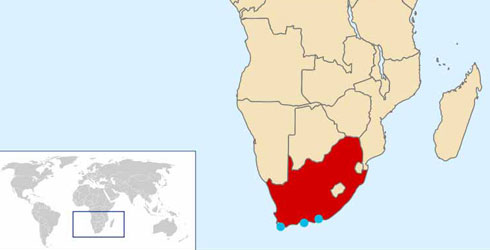
Mapped records of the distribution of Tennysonia stellata
Images
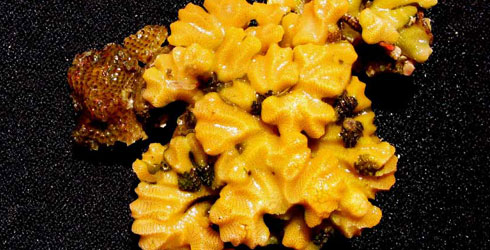
Living colony of Tennysonia stellata
© W K Florence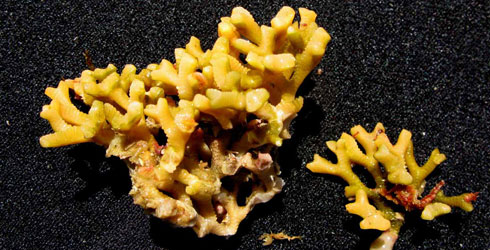
Tennysonia stellata from Port Elizabeth, South Africa, 23m depth.
© W K Florence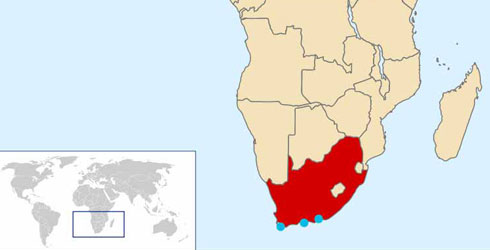
Mapped records of the distribution of T. stellata
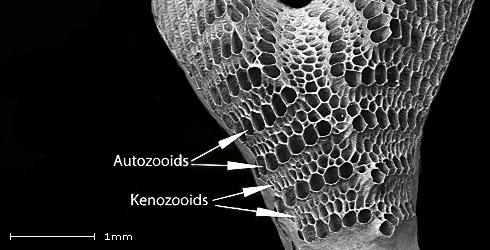
Auto kenozooids, empty cells that act as spacers or stems for new branches of the colony.
© A Waeschenbach and P Taylor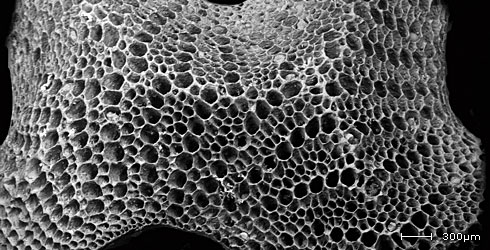
T. stellata from Cape of Good Hope, as illustrated by Busk, 1875. Kenozooids are open in this specimen.
© A Waeschenbach and P Taylor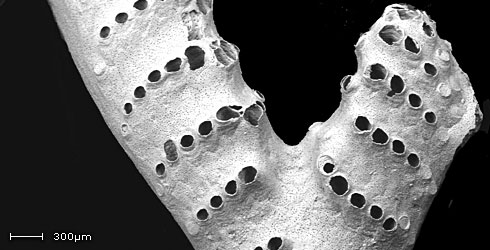
T. stellata from Plettenberg Bay, South Africa. Kenozooids are obscured by overgrowth of exterior wall calcification.
© A Waeschenbach and P Taylor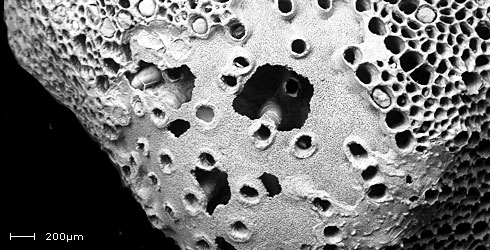
Gonozooid with broken roof, showing the interior of the brood chamber where embryos develop before being released as larvae.
© A Waeschenbach and P Taylor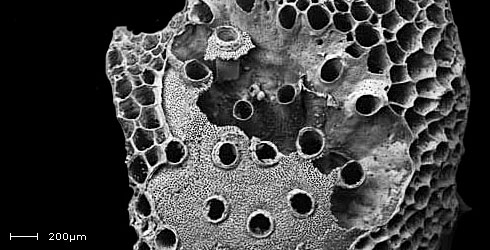
Heteropora gonozooid showing morphological similarities in overall colony and gonozooid appearance in the unrelated species Heteropora sp.
© A Waeschenbach and P TaylorAbout the author

Dr Andrea Waeschenbach
Post-doctoral Research Assistant studying the molecular systematics of tapeworms and bryozoan evolution.
Author's quote
'DNA sequencing of Tennysonia stellata resulted in an unexpected scientific finding about its position on the bryozoan tree of life. The addition of this species into our analysis provided yet another example of the morphological plasticity found in bryozoan colony morphology. These findings were the result of a serendipitous tissue donation from a colleague and highlight how many surprising discoveries are still to be made in this field of research.'
Toolbox
Glossary
Convergent evolution
Acquiring the same trait via different routes.
Cyclostomes
An ancient order of bryozoans which first appeared in the Lower Ordovician period
Gonozooid
A zooid that produces gametes (reproductive cells)
Kenozooids
Empty cells that act as spacers or stems for new branches of the colony
Lophophores
A feeding organ found in particular groups of aquatic animals including bryozoans
Nudibranchs
A taxonomic clade of marine molluscs that shed their shells after the larval stage
Polyembryony
Two or more embryos developing from the same fertilised egg
Zooid
Individuals within the bryozoan colony
Zooidal
Polymorphism are variations within a population of zooids.
